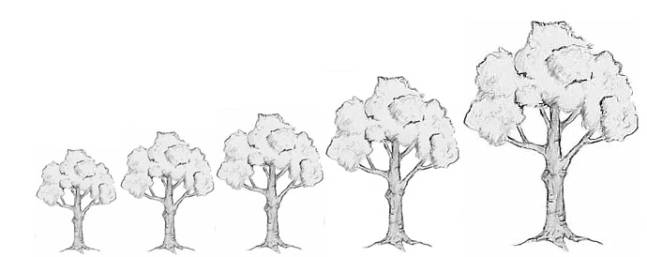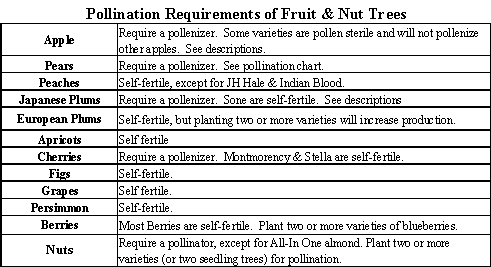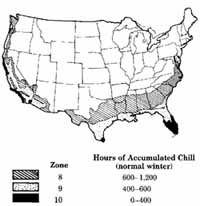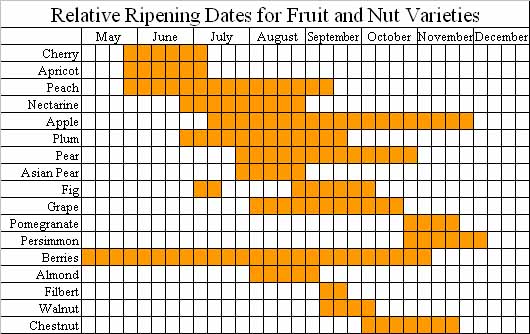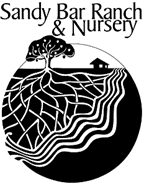 |
|
Tips On Choosing Fruit Trees |
|
Find out what condition has the most limiting effect on fruit growing in your area, and keep this in mind when choosing. In northern regions it may be extreme winter cold, while some southern areas do not get enough chill for certain fruits such as cherries & filberts. In some areas Spring frosts may damage blossoms and reduce fruit set certain years. Once you’ve determined your limiting factor(s) you can make choices accordingly. Choose hardy varieties for extreme cold, low chill varieties for southern climates, disease resistant varieties for cool, damp climates etc. Make the most of your site and climate. Extended rain & fog in coastal areas contribute to disease problems in tree fruit, but is ideal for berries. Choose plums and early to mid-season disease resistant apples for coastal areas, avoid the late season fruit that may not get enough time to ripen.
|
|
Here's what you need to consider when buying fruit trees, click on the links or scroll down the page for details:
|
Rootstock Selection Determines Tree Size and Spacing |
|
The
rootstock is the lower portion of the tree that you don’t see.
Rootstock selection and pruning determine the size of a tree.
If you have limited space, choose a dwarf or semi-dwarf rootstock and
keep it well pruned. If you want a
tree to hang a hammock on, or to use as windbreak or shade, go for a
semi-standard or standard. The
diagram below shows the relative sizes of different rootstocks. |
| 21' 18' 15' 12' 9' 6' 3' |
|
|
Bud 9
(apple)
M7
(apple)
M111
(apple)
Standard |
|
|
|
Macroclimate What Sunset Zone Am I In? - - You can identify your Sunset zone www.sunset.com/sunset/garden/article/1,20633,845218,00.html. You can also consult the climate zone maps in the Sunset Gardening Book for your region.
|
Use the following chart to determine your USDA climate zone:
|
USDA
ZONE |
Average
Annual Minimum Temperature |
|
ZONE
1 |
Below
–50° F |
|
ZONE
2 |
-50°
to -40° F |
|
ZONE
3 |
-40°
to -30° F |
|
ZONE
4 |
-30°
to –20° F |
|
ZONE
5 |
-20°
to -10° F |
|
ZONE
6 |
-10°
to 0° F |
|
ZONE
7 |
0°
to 10° F |
|
ZONE
8 |
10°
to 20° F |
|
ZONE
9 |
20°
to 30° F |
|
ZONE
10 |
30°
to 40° F |
|
|
|
Don’t
be afraid to experiment
– Keep in mind that a climate zone is the map, and your site the actual
territory. Most written advice
(this catalogue included) will be conservative by necessity.
Climate zones do not account for your slope, aspect & local weather,
warm spots and frost pockets. These
all add up to your local microclimate, which may vary from what a climate zone
tells you. Use the climate zone as
a guideline, not an absolute. Use
the information in this catalogue to make educated choices and avoid varieties
that are obviously not suited to your climate.
Don’t be afraid to experiment and try something new.
Ultimately the only way to know how a fruit will produce on a specific
site is to plant it there. |
|
Microclimates
- Making the Most of Your Location |
|
Slope
– Bear in mind that cold air moves like water, so in spring and fall a valley
floor will usually be significantly colder than a slope.
In fact, some slopes are called banana belts, because they remain
frost-free much longer than valley floors, which may be subjected to hard
frosts. If you are in a warm
climate and are concerned about not having enough chill, plant in low spots when
possible. If you are in a cold
climate and are concerned about frost damage, make the best use of slopes when
available. |
|
Aspect
- A south-facing slope is, of course, much warmer than a north-facing slope.
Western slopes receive the hotter, more intense afternoon sunshine, while
eastern slopes receive the less intense morning sun.
A south facing wall is a good place to plant a tree that needs extra heat
in order to ripen. If the wall has
an overhang, it will also provide some frost protection.
|
| Thermal
mass –
Water and stone will absorb heat during the day and re-radiate it at night.
A stone or brick wall can be an ideal place for ripening a late fruit
crop. Translucent jugs of water
placed in a greenhouse or around fruit trees will re-radiate heat at night.
A small pond will serve as a heat sink in the summer and fall, and a cold
sink in spring and winter. Watering
before an anticipated frost will increase re-radiated heat – the wet soil will
absorb more heat than dry soil during the day, and release more at night. |
Pollination Charts for Sandy Bar Nursery Varieties:
TOP OF PAGE
|
For more details about chilling and to help make sense of just
how many days of low temperatures you may need for a given number of chill
hours, see the UCDavis California
Backyard Orchard website. |
How Many Trees Should I Plant?
|
|
The
number of trees you plant will depend, of course, on how much fruit your family
consumes. The “At a Glance”
tables in the catalogue and on the website tell you how much fruit you can
expect to harvest from each variety on different rootstocks. Don’t be intimidated by the quantities. You can spread your harvest throughout the season so that
your fruit does not ripen all at once (see below). Some of the fruit will be
culls and a lot of weight is lost when processing fruits. If you intend to preserve your fruit by juicing,
canning or drying then you will want to plan accordingly.
Consider the following processing conversions: |
|
|
|
By
choosing varieties that ripen over a long period of time you can enjoy fresh
fruit for most of the year, especially here in the west.
Some varieties are good keepers and will provide you with fresh fruit
well into the winter. And don’t forget canning, drying and freezing.
Most of the varieties in this catalogue are presented in order of
ripening, from early to late. Use this order and the chart below to plan for fresh fruit
throughout the year. |
|
|
